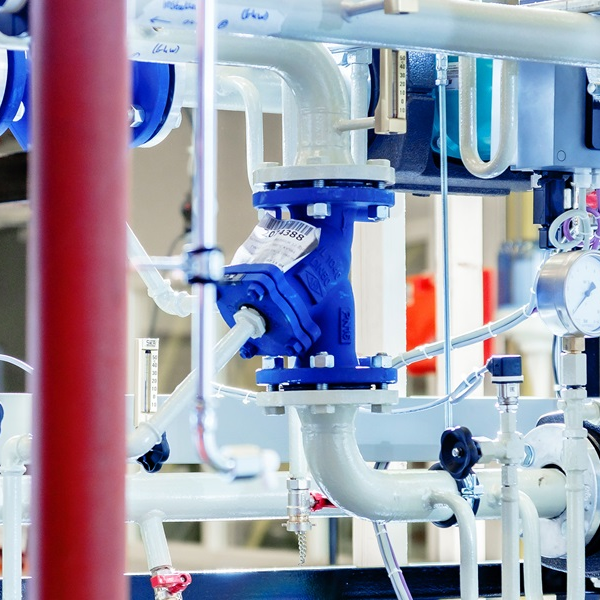InnovaHub
Pioneering in the polder

InnovaHub
For over a year now, InnovaHub has been supplying seventeen households in Stad aan ’t Haringvliet with heating and cooling. This local energy hub, developed by Hylife Innovations and its partners, intelligently links supply to demand and can store energy for both short- and long-term periods using batteries and hydrogen respectively. For this unique initiative, Witteveen+Bos acted as systems integrator and provided various support services.
InnovaHub was developed in response to local government ambitions to reduce carbon emissions and the impending threat of grid congestion. The hub is a local source of energy that allows people in residential areas to heat and cool their homes and companies in business parks to power their processes. In principle, InnovaHub runs on 100 % sustainable energy generated by solar panels. The challenge is linking this supply with demand, as both factors can fluctuate. If there is no sun or wind for an extended period – a situation known as a ‘dunkelflaute’ – then supply plummets. But demand also varies, with peaks in the morning and late afternoon or early evening.
Best storage is no storage
When it comes to green energy, the general rule is that the best storage is no storage. Why? Because storing energy means losing some of it. This is why InnovaHub ensures, wherever possible, that energy generated from local photovoltaic systems or nearby wind farms is used immediately.
If overproduction does occur, then InnovaHub stores the excess energy either by using batteries or (via electrolysis) green hydrogen, or in the form of (waste) heat or cold. Battery storage is suitable for brief production peaks. For prolonged overproduction, such as during the summer months, InnovaHub produces green hydrogen. Ideal for season-based storage, the hydrogen can be converted into electrons within the hub.

Link to mobility
Mobility is inextricably linked to housing. In rural areas, in particular, the need for a car is great. Introducing shared electric cars into a neighbourhood can reduce this need, but Hylife Innovations goes a step further and gives cars a function in the energy system. The average family car spends most of its existence parked somewhere, typically at home in the driveway. By making car charging systems bidirectional, electric cars can become part of the energy system.
Identifying risks
If developing a groundbreaking concept like InnovaHub is the first step, then arranging the necessary permits is the second. Witteveen+Bos supported Hylife by identifying risk factors, such as hydrogen storage, and arranging the permits. We also carried out extensive safety studies and calculations during the design process. With InnovaHub now up and running for over a year, the local initiative has generated its first batch of experiences. The project has also generated significant interest both at home and abroad. ‘All eyes are on us,’ explains Hylife. ‘It’s up to us to make the concept a success and roll it out further.’
More information?




